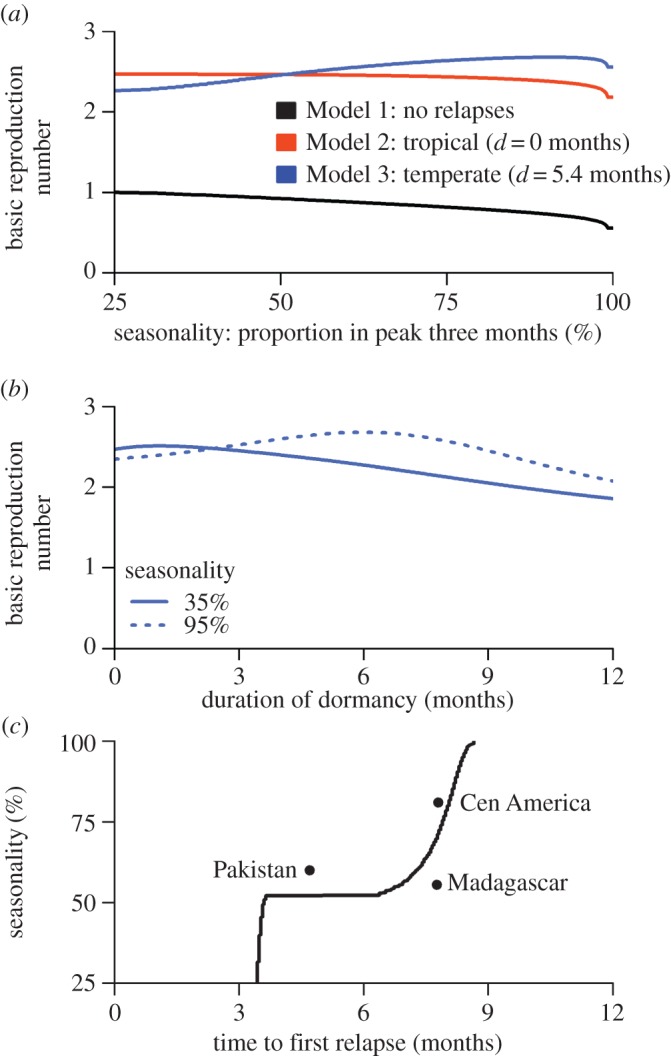Figure 4.

Effect of seasonality on the transmission potential of P. vivax. (a) For non-relapsing P. falciparum, R0 decreases with increasing seasonality. For tropical strains of P. vivax, there is a modest reduction in R0 with increasing seasonality. By contrast, for temperate strains of P. vivax, R0 increases with seasonality. In the simulations presented here, the difference between R0 for P. falciparum and P. vivax is owing to relapses. (b) The transmission potential of temperate strains of P. vivax will depend on the duration of dormancy, with R0 optimized at longer durations in more seasonal settings. (c) For a given seasonal profile, the time to first relapse (dormancy plus latency in the liver) can be estimated by maximizing R0. The time to first relapse (solid line) is predicted to increase with seasonality. Notably when seasonality crosses a threshold of ≈50% of transmission in the peak three months, the time to first relapse switches from 3–4 months characteristic of tropical phenotypes [24,38,39] to 6–9 months characteristic of temperate phenotypes [27,40].
